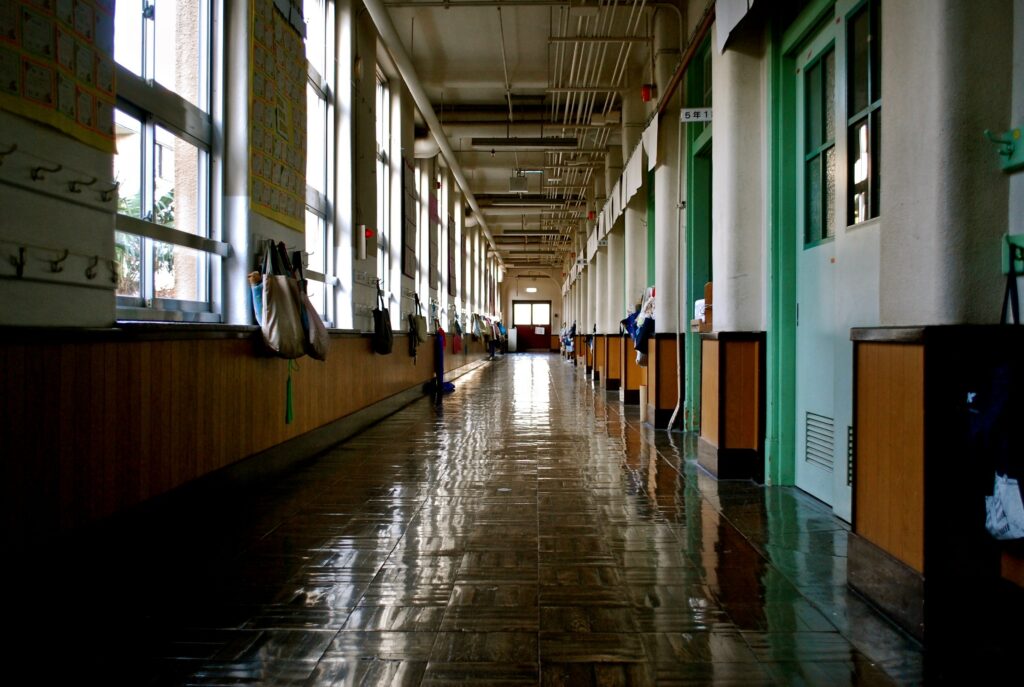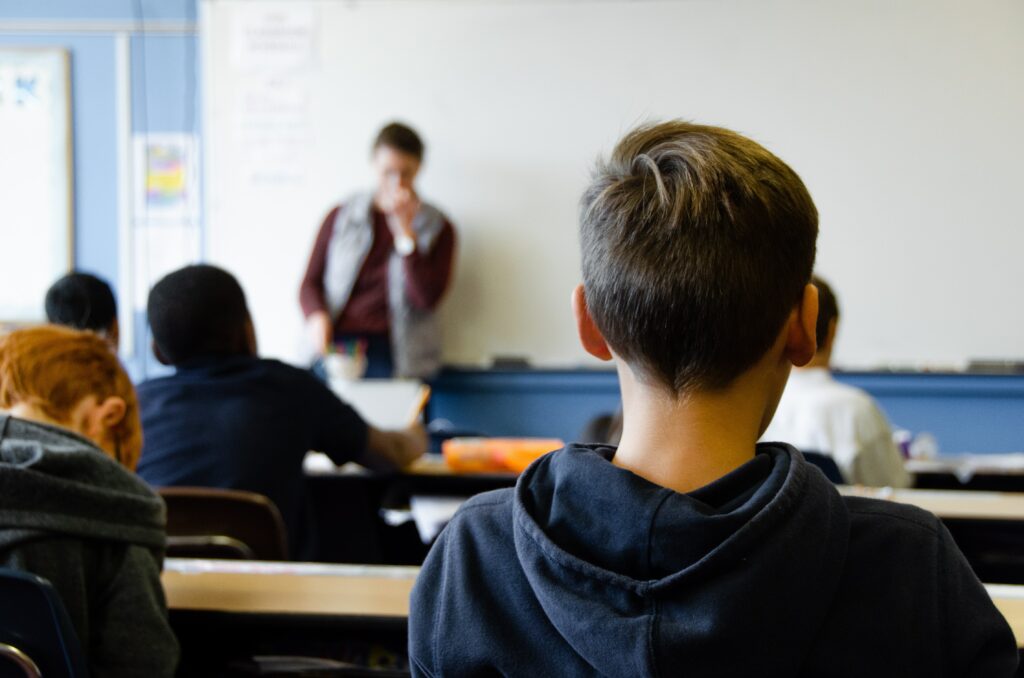Health And Safety In Schools

Health and safety in schools can feel like an overwhelming topic. Keeping staff, students and visitors safe means there are many things to think about when collating a health and safety policy in schools. This guide aims to explain the importance of health and safety in schools and how to go about putting together a comprehensive health and safety policy in line with UK Government legislation and advice.
What Is Health And Safety In Schools?

Health and safety in schools is a legal obligation and all schools must ensure they comply with health and safety regulations. Any schools that do not comply may face severe penalties. Moreover, maintaining the health and safety of everyone in the school is a moral and ethical decision. A health and safety policy in schools exists to protect children, staff and visitors from any possible hazards in schools.
The primary function of any school provision is teaching and learning, but to do so safely is of paramount importance and time must be taken to construct rigorous health and safety measures. Health and safety in schools means compiling a school risk assessment, establishing robust control measures and reviewing and maintaining detailed documentation that can be referred to for all health and safety matters.
Who Is Responsible For The Health And Safety Policy In Schools?
Ultimate responsibility for the health and safety policy in schools falls to the local authority, governing body, or academy trust in charge of the school. In reality, the headteacher is the person who will manage the health and safety policy in schools. This means making sure the health and safety policy is being executed and followed in accordance with Government guidelines and that all staff have a clear understanding of their responsibilities and potential risks. Headteachers may also organise training programmes for staff and there may well be other senior faculty members involved in administering the health and safety policy. Day to day risk assessments can also be undertaken by subject leads, class teachers, TAs, or other support staff.
What Are Some Of The Hazards In Schools?

Perhaps unsurprisingly, having large numbers of children gathered in one place can increase the amount of hazards in schools, more so than in an office for example. Schools have a moral obligation to keep children safe on site as they would be kept safe by their parents. A school has any number of activities taking place at any one time, and a large cohort of pupils and staff to look after, not to mention visitors. This means there are multiple hazards in schools to be aware of, and to include in any school risk assessment. Examples of hazards in schools include:
- Slips And Falls – Busy corridors, wet floors or cluttered spaces can result in slips or falls in a school
- Fires – Fire safety is a serious concern in schools due to flammable chemicals and the upkeep of electrics and fire safety equipment, not to mention safely evacuating hundreds to thousands of children should a fire break out
- Hazardous Substances – School chemistry labs and cleaning cupboards can be full of hazardous substances. These should be covered by a COSHH assessment where necessary
- Electrics – Damaged or overloaded electrical outlets, wiring, and equipment can pose a risk and should be tested regularly
- Food Safety – School cafeterias must follow food safety standards and make sure that all food given to children is nutritious and safe to eat, and that any allergies have been sufficiently catered for
- Accidents – Accidents can happen anywhere in schools, be it in a playground or a classroom with chairs and tables to bump into. A lack of supervision can contribute to accidents in schools so there should be adequate numbers of staff to look after children.
- Sports Injuries – Improper use of equipment or a lack of instruction could result in sports injuries during PE lessons or after school activities
- Sanitation – All schools should ensure everyone on site has access to clean water, that the school environment is clean and that sanitation procedures are followed
- Building Structure – Hazards in schools can arise when the school buildings or foundations are very old. Asbestos or lead paint may be present or the concrete could be unsafe and buildings may need to be reconstructed or shut
- Medical Emergencies – There should be staff in school who are first aid trained to ensure that any medical emergencies are dealt with swiftly and in the correct manner to reduce any serious consequences
- Travel And Transport – Every school trip, be it an educational trip abroad or an after school sports fixture, should have its own school risk assessment to mitigate any risks associated with travel and transport. HSE has specific guidance regarding school trips to help schools plan for all eventualities
- Illness – Illness is one of the common hazards in schools due to the number of people in close proximity to one another, and there should be control measures for the spread of infectious diseases
Managing Health And Safety In Schools

There are multiple regulations that all schools must adhere to. The principle one being the Health and Safety at Work Act 1974. Secondary to this is Management of Health and Safety at Work Regulations 1999. However, because health and safety in schools is so crucial and because there are numerous hazards in schools, a health and safety policy in schools must also comply with a number of other regulations including:
- The School Premises (England) Regulation 2012
- Health and Safety (First Aid) Regulations 1981
- The Control of Substances Hazardous to Health Regulations 2002
- The Regulatory Reform (Fire Safety) Order 2005
- Equality Act 2010
- Children’s Act 2004
- The Control of Asbestos at Work Regulations 2012
- The Construction Design Management Regulations 2015
- The Building Safety Act 2022
- The Health and Safety (Display Screen Equipment) Regulations 1992
Each of these should be given full consideration when putting together a health and safety policy in schools or a school risk assessment. The reason there are so many regulations is to ensure that children are kept safe, staff have a safe working environment and that schools are operating legally at all times.
To efficiently and effectively manage health and safety in schools, the risks and control measures included in a school risk assessment should be prioritised so that the right amount of time and attention is given to the higher risk hazards in schools. Meetings may also be held periodically to discuss and review the health and safety policy in schools. Managing a health and safety policy in schools does not mean avoiding any and all risks, as this is not feasible, but about using a proportionate amount of time to mitigate and reduce risks as much as possible whilst also allowing for personal responsibility.
What To Include In A School Risk Assessment

There will likely be a school risk assessment to cover the various areas and risks that we have mentioned above. Each school risk assessment will therefore differ slightly in the exact details and control measures contained within. As a general rule though, all school risk assessments should follow a similar format, which might look like this:
- Outline the activity taking place, whether that’s a sporting event, a chemistry lesson or a trip away. Write down the exact details of the specific activity and who will be involved
- Identify the risks and hazards arising from the activity
- Define who is likely to be affected by the hazards in schools. So for food safety, children with allergies could be most at risk
- Gauge the level of risk to help prioritise areas requiring the most attention. Add a score from mild to severe to determine if control measures are essential or not required at all
- Establish the control measures and give plenty of detail for anyone reading and using the school risk assessment. A control measure might be having the right number of first aid trained staff on site at one time, or storing hazardous substances safely
- Include any extra recommendations that might also help to reduce risks
- Regularly review the school risk assessment to make sure it is up to date and still offers the highest level of protection
Creating a school risk assessment template can help to speed up the process so that any new or updated risk assessments can be completed quickly and effectively.
Your School Risk Assessment From Rhino Safety
All schools know and understand their duty in taking care of, and protecting, children. As with all workplaces, employees and visitors should also be looked after. In order to do this to the highest possible standards, outsourcing health and safety can take the hassle and the headache out of the process, and ensures that each and every school risk assessment is in-depth and fully compliant with all legislation.
Rhino Safety are health and safety experts that can help with all areas of Health and safety in childcare or provide health and safety training for those working in childcare. Contact us to find out more or to obtain a quote.
